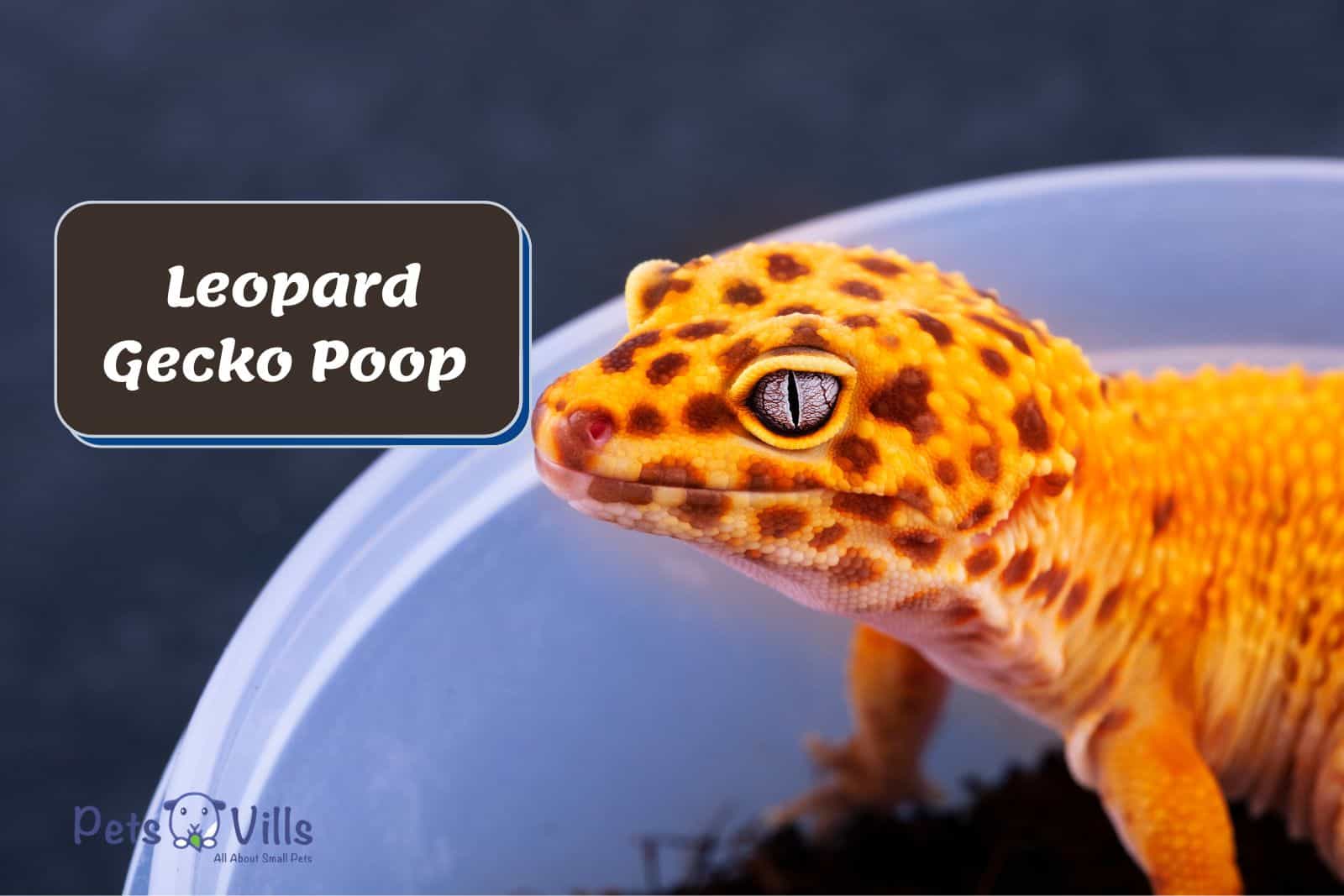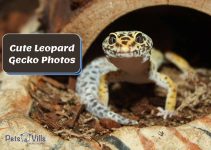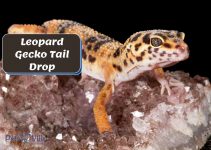In my first two years as a gecko owner, I found it challenging to understand leopard gecko poop color and what was normal.
As it turns out, dealing with these color variations was the only frustrating part of raising these cuties.
However, as I learned more about their pooping patterns and the conditions that may be responsible for them, things got more interesting!
Let’s take a look at what I’ve learned over the years.
Table of Contents
What Does Healthy Leopard Gecko Poop Look Like?
Healthy leopard gecko poop is expected to be solid and not watery or runny. In size, it should be about half an inch long and should be cylindrical.
There’s usually an attached white substance that you’ll find either on the brown cylindrical poop or close to it. This white material, in healthy leopard geckos, is uric acid in its solid form.
It is usually about one-fourth the size of brown poop, and depending on the hydration level, it can be either solid or gooey. This is still a healthy poop.
I’ve witnessed instances where the poop from the gecko is entirely white. But this doesn’t necessarily indicate an unhealthy condition in the gecko.
Leopard geckos undergo a shedding season. What happens here is that the geckos shed the top layer of their skin, which is usually whitish at this point.
After pulling off the shed skin, leopard geckos love to eat this whitish material. Some of this whitish material may be undigested in the digestive tract of the gecko and can be released as white poop.
Therefore when you see the poop all in white, it doesn’t exactly mean that the leopard gecko is unhealthy.
As you can see, even healthy gecko poop can have some variation. It is important to understand all the possible variations as it is a way to keep track of your pet’s nutritional health.
Did you know that malnutrition is regarded as one of the most common health conditions in leopard geckos?
From the color, size, shape, and frequency of the poop, you can naturally tell if your leopard gecko poop is in good health at a particular period. In healthy leopard geckos, the poop will always have a brown color.
Let me show you how to identify unhealthy leopard gecko poop.
READ MORE: Leopard Gecko Male vs Female
What Does Unhealthy Leopard Gecko Poop Look Like?
To answer this question, I’ll be using a table as I think it helps break things down more simply.
| Poop Color | Cause(s) | Meaning |
| White/Gray | Ingested skin shedding | Ingested skin sheddings may not be completely digested, and they can appear in the stool. You should also not confuse white urates with white/gray poop. White urates will always be part of the poop, even without shedding. |
Green | Plant consumption | Green stool is a sign your leopard gecko is beginning to feed on plants, and this should not be, as they are rather insectivorous. |
| Parasites | Infected insects used for consumption | Some symptoms of parasite infection can be seen in the stool, including bloody stool and even soft stool in some cases. |
| Runny | Bacterial infection, poor hygiene, contaminated food, stress | Runny poop is an indication that there is a GIT infection affecting the proper digestion of insects. |
| Soft | Diet Change or Cryptosporidium | Cryptosporidium is difficult to manage and can result in the soft stool. You may also notice soft stool when introducing an insect into the diet. |
| Yellow | Excess fat in the diet | Yellow poop is usually caused by excess bile in the fecal material. High bile content in feces is usually the consequence of excess fat in the diet. |
| Undigested insects | Low tank temperature or presence of exoskeleton | Tank temperatures can affect food digestion in geckos. As such, they should be kept at an ideal temperature for good nutritional health. Exoskeletons require high processing time for proper digestion and may not be completely digested at times. |
If you visit a reptile veterinarian, the first thing you’ll most likely be asked is how well your gecko is feeding and what the poop looks like. Now, I need to mention at this point that leopard geckos are largely insectivorous. (1)
For balanced nutrition, they need to derive nutrients from various insects, and when they do not get this, malnutrition and other health issues may set in. These conditions can normally be detected by simply looking at the poop.
Let’s look at some typical examples.
White Poop
In case you missed seeing your leopard gecko while it was shedding, the white poop helps you catch up with what you missed.
Although shedding is a regular process in geckos that continues throughout their life cycle, it is more common in juvenile leopard geckos.
They love to eat the shed skin, and most of the time, they do not get to digest all of the ingested material. The indigestible material will be defecated as white matter, which is not a sign of an unhealthy condition.
According to a publication by the Association of Reptile and Amphibian Veterinarians, the eating of shed skin in leopard geckos is not a harmful process. (2) There are, however, other instances where white poop can indicate an unhealthy condition.
If you notice white specks in the poop, those might be parasite or cricket eggs. You might need to visit your vet with the stool samples for fecal examination.
Don’t forget also to check out my article on “cute leopard geckos” for even more adorable gecko photos. You won’t be disappointed!
Diarrhea
Is your leopard gecko’s poop runny and wet? Do you see particles of undigested insects in the stool?
Loose stools is a sign that your pet is suffering from diarrhea. You might also notice that the stool has a stronger smell than normal.
Parasites, bacterial infections, poor hygiene, especially from dirty tanks, and even stress are the different factors that can result in diarrhea in leopard geckos.
Green
Herbivorous reptiles would normally have green colorations in their stool. However, this should be regarded as abnormal with leopard geckos as they specifically feed on insects.
Under normal circumstances, they should not eat plants. Therefore, the first thing you want to find out when you notice green poop from your gecko is whether anyone living with you has been feeding them plants.
At other times, you may need to inspect their enclosure to be sure they’ve not been eating the decors.
Yellow
Bile content is the primary reason for yellow stool in nearly all animal species. It’s a greenish-yellow liquid that is produced when fats get into the digestive system.
Its role is to break down fat into digestible form. When fat becomes excessive in the diet, the bile production increases, and consequently, the stool will appear yellowish.
You should avoid feeding your pet excess butter worms, wax worms, king worms, and mealworms.
Parasites
Leopard Geckos suffering from parasitic infections often get them from the feeder insects. At other times, they may become infected by contacting the poop from infected geckos or other animals.
This will only happen if you keep multiple geckos in the same enclosure. Parasitic infections such as cryptosporidiosis can be pretty difficult to get rid of. (3)
Cryptosporidiosis is characterized by clinical signs such as soft poop, regurgitation, and weight loss. Bloody poop is another indicator of a parasitic condition in leopard geckos.
Soft Stool
If your pet has been excreting soft stool recently, then it most likely has to be that you have introduced a new kind of diet to them.
It takes a while for the digestive tract in leopard geckos to adapt to a new diet.
For example, introducing a new kind of insect to their diet can result in a high proportion of undigested insects in their poop. To avoid problematic digestion, I’ll advise introducing new insects into their diet gradually.
This video will help you learn more about leopard gecko poop.
Must-Know Things About Leopard Gecko Poop
I’ll like to share some facts you ought to know about leopard gecko poop. I’m aware that most gecko owners have questions regarding their reptile poop. I had tons when I started.
Let’s look at some of these questions.
How Often Do Leopard Geckos Poop?
This depends on a few factors, which include the rate of metabolism, tank condition, and of course, diet. It’s just natural that geckos that eat regularly will poop from time to time.
The higher the body metabolism rate (i.e, the process of converting food into a usable form of energy), the more often it defecates. These two factors constitute an important difference between a juvenile and an adult leopard gecko.
Baby geckos eat about 5-10 insects daily and poop once daily. They also have a higher rate of metabolism.
Adult leopard geckos, on the other hand, eat between 5 to 10 insects in two to three days and poop only once within this period.
High tank temperature may also increase the frequency of pooping. At 92°F, you will begin to notice an increased rate of pooping from your gecko.
If you’re a leopard gecko owner, you might wonder if your pet can drop its tail. Check out our article “Do Leopard Geckos Drop Their Tails” to learn more about this fascinating behavior.
Do Leopard Geckos Poop During Brumation?
During the winter months, leopard geckos go into Brumation to survive the cold. This differs from hibernation, as the geckos do not become dormant.
They only slow down their body metabolism very significantly during this period. It’s somewhat like a resting period for them during which they do not eat or poop.
How Long Can A Leopard Gecko Go Without Pooping?
Baby geckos are expected to poop daily as long as they are fed regularly. If your baby gecko skips a day, you shouldn’t worry about that.
When an adult gecko begins to go five days without pooping, then you should start conducting investigations. You should begin by checking the tank’s ventilation and temperature.
If the enclosure is too cold, this might be the reason they’ve not been pooping, as cold temperatures slow down their metabolism. But what if, after checking, you discover that the temperature is okay?
In that case, it would be good to consider other factors.
Why Is My Leopard Gecko Not Pooping?
The first thing you want to check when your gecko is not pooping is whether it has been eaten. This is because, under normal circumstances, your gecko should poop if it is regularly eating.
Another factor in suspecting if you discover that your pet is not pooping, even though it is feeding well, is constipation.
Constipation in geckos mostly happens due to dehydration or obstruction of the digestive tract. A urate plug can obstruct the digestive tract.
Why is my Leopard Gecko’s Poop So big?
Poop is largely composed of undigested food materials (4). The more food your reptile eats, the more poop it will produce.
This is because it will have more portions to excrete as unused food material. So you need not worry if your leopard gecko is expelling big poop.
You should check if they’ve been feeding on larger insects. If this isn’t the case after observing them, you should consider visiting your reptile veterinarian.
How Do I Get a Leopard Gecko to Poop?
There are a few things you can do to get your reptile pet to poop. First, you should try hand-feeding your pet without the use of force.
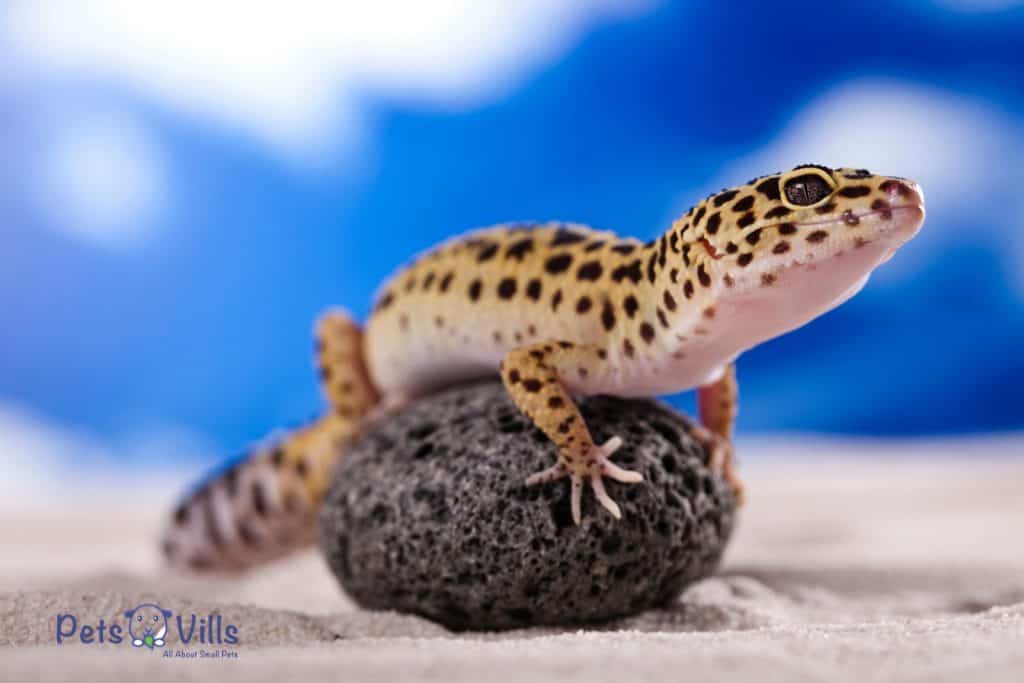
You can also provide additional water if you notice any sign of dehydration.
For constipation, try putting your leopard gecko in warm water for about thirty minutes. It will help to induce defecation.
You should also minimize stress, especially by adjusting the temperature to suit their needs.
FAQs
#1 Do Leopard Geckos Eat Their Poop?
Leopard geckos eat their poop on very rare occasions. Leopard Geckos will not eat their poop or even poop from other animals. But you may find them doing this in sporadic cases as their way of reinforcing their gut microflora.
#2 Does Leopard Gecko Poop Smell?
Leopard gecko poop smells, especially when fresh. The more it dries, the more the smell reduces.
Conclusion
You’ll agree that your reptile’s pooping patterns say a lot about its health. It is important to keep an eye on normal leopard gecko poop that your pet produces so that you can tell the difference.
It can be an early indicator that something is wrong and give you peace of mind that your pet is healthy.
This way, you can keep your pet buddy in good health.
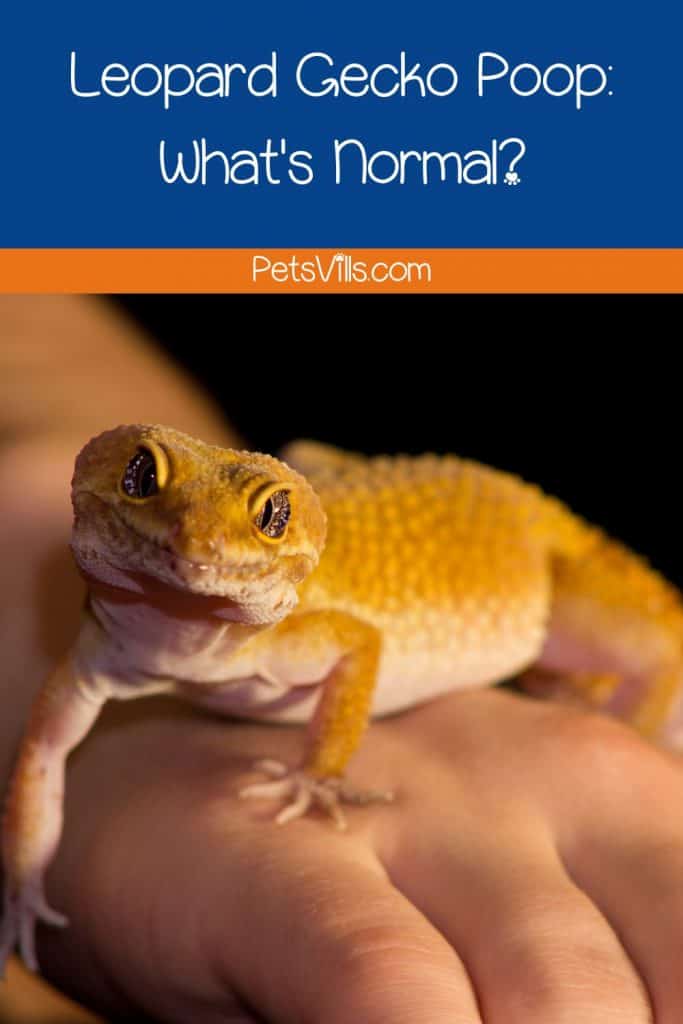
Resources
1. Kubiak M. Vet Times MANAGEMENT, CARE AND COMMON CONDITIONS OF LEOPARD GECKOS [Internet]. 2011. Available from: https://www.vettimes.co.uk/app/uploads/wp-post-to-pdf-enhanced-cache/1/management-care-and-common-conditions-of-leopard-geckos.pdf
2. Association of Reptilian and Amphibian Veterinarians | ARAV Membership [Internet]. ARAV. Available from: https://arav.org/
3. Xiao L, Ryan UM, Graczyk TK, Limor J, Li L, Kombert M, et al. Genetic Diversity of Cryptosporidium spp. in Captive Reptiles. Applied and Environmental Microbiology. 2004;70:891–9.
4. Mawer S, Alhawaj AF. Physiology, Defecation [Internet]. PubMed. Treasure Island (FL): StatPearls Publishing; 2020. Available from: https://www.ncbi.nlm.nih.gov/books/NBK539732/
Alina Hartley is a small-town girl with a ginormous love of bearded dragons. It all started with Winchester, a baby bearded who was abandoned at the shelter by his former owners because of a birth defect that caused one front leg to be shorter than the other. Alina originally went to the shelter looking for a guinea pig, but one look at Winchester and it was love at first sight. From that day on, Alina has dedicated her life to learning everything she can about bearded dragons. She loves helping new beardie parents start their incredible journey with these magnificent reptiles.
Follow her on:
LINKEDIN
TWITTER.
Read her latest articles HERE
Learn more about her HERE.

